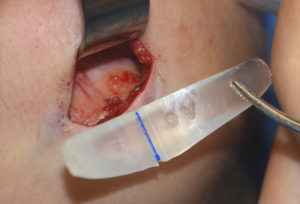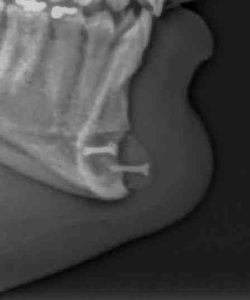Chin implants are the most common aesthetic facial implant done of which the vast majority are of silicone composition. Silicone is the most commonly used chin implant material around the world because of its lower cost, ease of insertion due to its flexibility and the wide variety of styles and sizes that are available. The one concern or criticism about silicone chin implants is that it exhibits varying degrees of ‘erosion’ underneath it. While often talked about there is actually little scientific study to quantitate its occurrence and whether it is a progressive issue.
In a special Best papers October 2019 Global Open issue of the journal Plastic and Reconstructive Surgery an article was published entitled ‘Bone Resorption after Use of Silicone Chin Implants, Long-term Follow-up Study with Lateral Chin Radiography’. In this study the authors performed intraoral silicone chin implants in fifteen (15) patients in a subperiosteal pocket. A single suture fixation was used. They were followed for at least one year after surgery with a lateral x-ray.
Fourteen (14) of the patients (93%) exhibited minor bone changes under the implants at their superior ridge. Most of the patients had less than 1.5mm loss of bone under the implant (11/14, 93%)) while the other three had 2mms change. One patient with a 17 year followup had 0.8mm change. No patient had any symptoms of these bony changes.
The authors have shown in their patient series that minor bony changes under silicone chin implants is to be expected and is not an ongoing issue. Unfortunately the authors fail to provide an adequate and obvious explanation for these bony changes. They continue to use the term ‘erosion’ which is a biologically incorrect term for this common facial implant phenomenon…which actually occurs anywhere on the face.
Erosion is a term that indicates an active and progressive loss of tissue due to an inflammatory reaction to the implanted material. It is a reaction that does not stop until the offending material is removed. This is clearly not what is occurring as the changes are relatively minor and stop at some point after implantation. This is a phenomenon that is more accurately described as ‘passive adaptation’ or implant settling.


Dr. Barry Eppley
Indianapolis, Indiana


